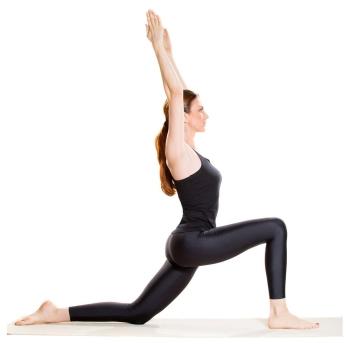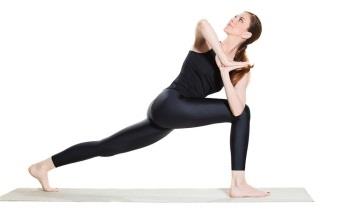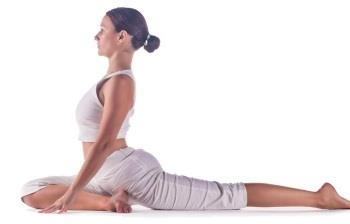Get 10% Off*, Use Code: HPDS25
Get 10% Off*, Use Code: HPDS25

‘Shin splints is the term given to the pain resulting from the injuries at the front of the lower leg. Every athlete experiences shin splints at some point in their life. Shin splints are the bane of runners, tennis players, basketball players, football players, gymnasts, and dancers. Pain is relatively common at the beginning of a fitness program. Athletes who take part in high-impact sports are at the highest risk; nevertheless, even walkers can also develop this condition, especially if they increase their walking speed or distance quickly.
Shin splints often plague newbie runners who increase their mileage too rapidly or veteran runners who abruptly change their workout regimen or add too much mileage. The change in terrain or switching from running on flat surfaces to hills can also cause shin splints. Mostly, these are caused by running too much, too fast, and too soon. In this article, you will learn how to heal shin splints fast using effective techniques and strategies.
Shin Splints, or medial tibial stress syndrome, are classified among the group overuse injuries and occur after repetitive movements that cause trauma at the site of the shin bone. It is the inflammation of the muscles, tendons, and bone tissue around the tibia. It can be painful and often disrupt the training regimes of athletes.
Pain typically occurs below the knee either on the front outside part of the leg or along the inner border of the tibia, where muscles attach to the bone. Often, the pain starts as the exercise begins, gradually gets better as the session continues, then gets worse again after the training session is complete.

Here are some key points to note about shin muscle pain -
In general, shin splints develop from repetitive activities that cause stress on the shinbone and the connective tissue that attaches the muscle to the shinbone. These also occur after sudden changes in physical activity, such as a sudden increase in the frequency, duration, and intensity of a workout. Smoking and a general lack of fitness also contribute to it.
There can be a number of factors at work that make it hard to pinpoint one reason, but some of the major causes of shin splints are-

Common symptoms of shin splints are-
Conditions like stress fractures, Tendinitis, and chronic compartment syndrome have symptoms similar to shin splints. Get yourself checked by a doctor to know the exact cause of the pain. Diagnosis by an X-ray can rule out other causes.
It is common for athletes to get the temptation to run through the pain; however, in this case, it can potentially damage underlying tissues and cause permanent injury. It is recommended to take a minimum of 2 weeks to rest from the activity that caused the shin splints. Taking proper treatment can prevent re-injury and heal the shin splints quickly. Using arch supports or orthotics is found to be extremely helpful, particularly for individuals with flat arches. Here are some tips on how to heal shin splints fast -
If you have medial shin splints, stretch your Achilles, and stretch your calves if you have anterior shin splints. The best way to do this is to use the ProStretch Leg Stretching Device. Calf stretching exercises help stretch the tibialis posterior muscle to heal shin splints fast. Perform the calf stretching exercise both on bent and straight knees. Toe raise and calf raise exercises to strengthen the muscles of the lower leg. You can slowly stretch your shins while kneeling on a mat. Hold your legs and feet together and point the toe backward. Support your weight on your hands and slowly sit back onto your calves and heels. Hold in the position for 10 to 15 seconds. Relax and repeat the exercise 3-5 times.
Products to get rid of shin splints
Strengthening exercise such as balancing yourself on one leg in a standing position and spelling out the alphabet on the floor or in the air with your toes is beneficial to treat shin splints. Repeat the exercise on each leg for 5 to 10 minutes. Alternate walking on your heels for 30 seconds is another great strength exercise. These strength exercises help in quick recovery and prevention.
Compression prevents stress by binding the tendons up against the shaft of the shin. You can try knee-length compression socks or stockings to protect and support the shin area. Cho-Pat Calf Compression Sleeve or the Shin Splint Compression Sleeve is a good choice to keep shin muscles relaxed.
Take rest or cross-train to let your shin heal. Swimming, kayaking, golf, yoga, martial arts, and aqua bike riding are good choices to cross-train.
Buy the correct running shoes suitable for your foot type. Motion-control shoes are special running shoes with a firmer midsole on the inside to reduce the amount of rolling and are best for overpronators. Neutral shoes with plenty of cushioning are ideal for Supinators. Orthotics are typically recommended for people with flat feet or recurrent problems. Shoe inserts take the stress off of the lower legs and help align and stabilize the foot and ankle.
Avoid hills, slopes, and uneven and hard surfaces until you get a complete shin splint recovery. Take precautions or go slow while walking on crowded roads.
Applying cold therapy via a cold pack or cold therapy compression wrap can ease the pain and swell in the affected area. Users can also apply topical pain relievers for instant pain relief and to heal shin splints fast.
Try leg massage to improve flexibility and reduce stress in the muscles of the lower leg, which may be causing traction on the bone. Leg massager can help remove tight lumps, bumps, and knots. They improve blood circulation, which may aid the healing process. Consult your physical therapist, who could guide you on proper massage of your leg.
Leg massagers to heal shin splints-
This yoga pose stretches the groin, hips, thighs, and feet, which can help heal shin splints by gently stretching and strengthening the muscles and tendons in the legs, including the shin area. The pose is perfect for those with hip or knee problems. Stand comfortably on the floor, raise your hands, and fold them together. Step your right foot forward between your hands. Stack your right knee directly over the right ankle. Lower down the left knee and slide the foot back to feel the stretch in the left hip and thigh. Take 5 to 10 breaths and repeat the process on the other side.

This yoga pose improves balance and strengthens the ankles. It builds stamina and endurance in your thighs and stretches the psoas and hips. The pose is also helpful in relieving sciatica pain. From the standing position, move your right leg forward. Join your palms together at the heart center. Lift your left knee, push your left heel back, and stretch the spine. Twist to the left and slowly lift your left hand up to align with your shoulder. Hold the position for five breaths and switch the sides to repeat the pose on the opposite leg.

This yoga pose will stretch your outer hips, thighs, psoas, and groins. The pigeon pose also strengthens the core muscles of your hips. Begin with a tabletop position with hands under your shoulders and knees under your hips. Slide your left knee behind your left hand and your left foot in front of your right hip. Stretch your right leg back behind you and relax it on the ground. Lower your hips toward the floor. Balance your weight on both legs and keep your torso straight. Remain in this position for 5 breaths or longer. Extend your hands out in case you need a little more stretch. To come out of the pose, gently push back through the hand, rest on your forearm, and lift the hips. Switch sides after every 5 to 10 breaths.

This yoga pose provides a gentle twist for the spine and a deep stretch for the outer hips. It can aid in healing shin splints by promoting relaxation, releasing tension, and improving flexibility in the hip and lower back area. Lie comfortably on your back and bend your knees up to a tabletop position. Extend your arms out alongside the body in a "T" position, with your palms facing up towards the ceiling. Gently cross your knees to the right side, lower them to the ground, and gaze towards the left. Hold the position for 5 to 10 breaths before switching sides.

Remember to consult with your doctor or physical therapist before beginning any new exercise program.
Follow the checklist to know if your shin splints have healed:
Shin splints might take up to 3 to 6 months to heal completely, depending on the injury's reasons. It is crucial first to get healthy and fully recover from the injury before returning back to your sport. There are high possibilities of re-injury and permanent damage if you start to work out before your shin heals. You can perform aquatic exercises like swimming to avoid aggravating your shin pain while they heal. HPFY carries a wide range of rehabilitation therapy products to help you return to your daily routine. If your shin splints do not heal after proper rest and treatment, consult your doctor to diagnose other reasons for the leg pain.
Disclaimer: All content found on our website, including images, videos, infographics and text were created solely for informational purposes. Our content should never be used for the purpose of diagnosis or treatment of any medical conditions. Content shared on our websites is not meant to be used as a substitute for advice from a certified medical professional. Reliance on the information provided on our website as a basis for patient treatment is solely at your own risk. We urge all our customers to always consult a physician or a certified medical professional before trying or using a new medical product.

Hunaid Germanwala, a seasoned digital marketer and content creator at HPFY since 2014, believes in the power of "health ...
How To Increase Iron Levels Quickly
It’s a question that must have puzzled you like many others. Iron is essential in hemoglobin production and its inadequate levels can negatively impact your health. Dive into this informative article to explore top iron-rich foods that can help you fight iron deficiency.
10 Best Coccyx Cushions for Tailbone Pain
If you're like most people, you spend about 8 to 10 hours sitting every day. However unhealthy, it is part of life for many, and can cause tailbone pain. Coccyx cushions can help alleviate this pain. Click to read more and find the perfect coccyx cushion for your tailbone pain.
5+ Best Adult Diapers for Fecal Incontinence
Dealing with fecal incontinence can be challenging, but you're not alone. Read this article and navigate through discreet and effective solutions that help you manage fecal incontinence and let you live life on your terms with confidence and comfort.
Top 5 Best Reviewed Nebulizers of 2024
Need an effective and affordable nebulizer? Look no further, in this article we offer 5 of our best reviewed nebulizers that are loved by our customers. Click to read more and find the perfect nebulizer for all your respiratory needs.
10 Best Penis Pumps For Erectile Dysfunction
For anyone dealing with erectile dysfunction, penis pumps serve as a great way to manage it. But with so many products available, determining the best one for your needs can be challenging. To assist you in refining your choices and making an informed decision, here are our top 10 options, recognized for their effectiveness and safety.